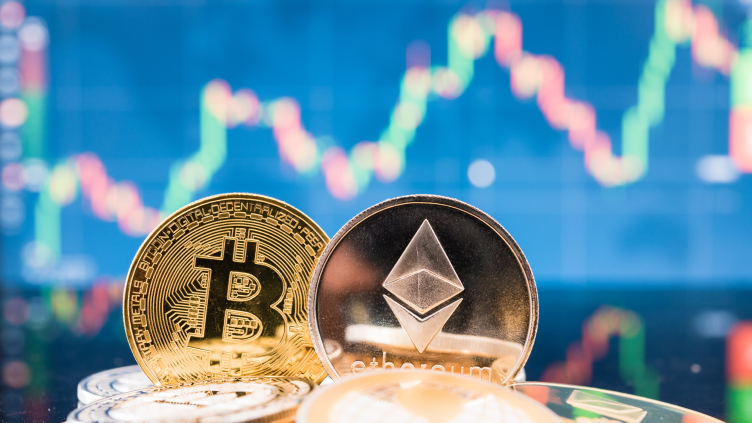Ethereum
Lido Takes First Step to Decentralize Ethereum Node Operator Amid SEC Allegations

Monday saw the launch of Lido’s community staking module on the Holesky testnet, which aims to allow new entities, including solo stakers, to become node operators without needing permission from its DAO.
Lido relaunched the liquid staking ecosystem in 2020 by introducing its flagship product, stETH, a rebasing token representing the principal amount of ETH staked by an individual and their rewards for helping secure the Ethereum blockchain network.
(Shutterstock)
Posted on July 2, 2024 at 6:55 p.m. EST.
Faced with allegations from the US Securities and Exchange Commission, the leader in liquid staking Pool is preparing to become more decentralized by taking a step toward integrating a more diverse set of Ethereum node operators, such as solo stakers, the “gold standard” of staking, according to the Ethereum Foundation.
On Monday, a Lido initiative called Community Staking Module, which is expected to allow permissionless entry for node operators, was activated on the Holesky testnet, according to a press release. governance position in the Lido forums by Dmitry Gusakov, the technical lead for Lido’s community staking product.
The move comes days after the SEC implied in a lawsuit against Ethereum software provider Consensys that Lido’s liquid staking token, stETH, was an unregistered security. Staked ETH, aka stETH, represents the principal amount of a person’s staked ETH and their staking rewards for helping secure the Ethereum blockchain network.
Lido’s stETH has a market cap of $33 billion, making the liquid staking provider the top DeFi protocol by total value locked. According to a Dune Analytics Dashboard According to crypto analyst Hildobby, Lido holds a 29% share of the total 33.3 million ETH staked.
The advent of Lido’s community staking module marks a shift from the protocol that first introduced liquid staking in 2020, as Lido on Ethereum has had a curated and permissioned validator set since its inception, where those who wish to act as a node operator for Lido must be vetted by the Lido DAO.
Learn more: How Liquid Staking Works
Allowed and restricted from the beginning
Unlike its competitor Rocket Pool, before a node operator can conduct validator operations for Lido, governance must vote on whether or not a potential address should be included in Lido’s active pool of node operators. At press time, Lido has 39 node operatorswhich includes companies such as P2P.org, Chorus One and Consensys.
The permissionless entry-centric initiative allows “any node operator – and especially community stakers, from solo stakers to groups of friends to hobbyists – to operate validators by providing an ETH-based collateral (security guarantee),” according to its Documentation.
The new community module is expected to make solo staking more accessible through the inclusion of several features such as low obligation for node operators as well as smoothed rewards from Ethereum’s execution layer and maximum extractable value.
Decentralization as a way to escape the SEC?
The move comes days after the SEC charged Consensys with offering and selling unregistered securities, namely Lido and Rocket Pool’s liquid staking tokens, through Metamask, a crypto wallet where people can stake and trade cryptocurrencies.
Consensys, which is also a node operator for Lido, “offered and sold tens of thousands of unregistered securities on behalf of liquid staking program providers Lido and Rocket Pool, which created and issued liquid staking tokens (referred to as stETH and rETH) in exchange for staked assets,” according to the SEC’s press release. States.
Learn more: Could the SEC Have a Case Against Liquid Staking Protocols?
The complaint characterizes Lido and Rocket Pool as issuers of unregistered securities, alleging that their staking programs “are each offered and sold as investment contracts and, therefore, securities.”
Under the so-called Howey test, which since a 1946 court case has been the legal measure for determining whether an investment is a securities offering, the agency said these liquid staking tokens meet the criteria.
In its press release, the company stated that LST purchasers are “making an investment in ETH in a common enterprise with a reasonable expectation of profits from the management efforts of Lido and Rocket Pool, respectively.” However, neither Lido nor Rocket Pool have filed registrations to offer these securities with the SEC.
The fourth prong of the Howey test being “the management efforts of others,” crypto projects have sought to be sufficiently decentralized that such a third party cannot easily be named.
LDO, Lido’s governance token, has declined 6.3% in the past 24 hours and 19.7% in the past 30 days to trade at $1.92, bringing its market cap to $1.7 billion, according to CoinGecko.
Ethereum
QCP sees Ethereum as a safe bet amid Bitcoin stagnation

QCP, a leading trading firm, has shared key observations on the cryptocurrency market. Bitcoin’s struggle to surpass the $70,000 mark has led QCP to predict Selling pressure is still strong, with BTC likely to remain in a tight trading range. In the meantime, Ethereum (ETH) is seen as a more promising investment, with potential gains as ETH could catch up to BTC, thanks to decreasing ETHE outflows.
Read on to find out how you can benefit from it.
Bitcoin’s Struggle: The $70,000 Barrier
For the sixth time in a row, BTC has failed to break above the $70,000 mark. Bitcoin is at $66,048 after a sharp decline. Many investors sold Bitcoin to capitalize on the rising values, which caused a dramatic drop. The market is becoming increasingly skeptical about Bitcoin’s rise, with some investors lowering their expectations.
Despite the continued sell-off from Mt. Gox and the US government, the ETF market remains bullish. There is a notable trend in favor of Ethereum (ETH) ETFs as major bulls have started investing in ETFs, indicating a bullish sentiment for ETH.
QCP Telegram Update UnderlinesIncreased market volatility. The NASDAQ has fallen 10% from its peak, led by a pullback in major technology stocks. Currency carry trades are being unwound and the VIX, a measure of market volatility, has jumped to 19.50.
The main factors driving this uncertainty are Value at Risk (VaR) shocks, high stock market valuations and global risk aversion sentiment. Commodities such as oil and copper have also declined on fears of an economic slowdown.
Additionally, QCP anticipates increased market volatility ahead of the upcoming FOMC meeting, highlighting the importance of the Federal Reserve’s statement and Jerome Powell’s subsequent press conference.
A glimmer of hope
QCP notes a positive development in the crypto space with an inflow of $33.7 million into ETH spot ETFs, which is giving a much-needed boost to ETH prices. However, they anticipate continued outflows of ETHE in the coming weeks. The recent Silk Road BTC moves by the US government have added to the market uncertainty.
QCP suggests a strategic trade involving BTC, which will likely remain in its current range, while ETH offers a more promising opportunity. They propose a trade targeting a $4,000-$4,500 range for ETH, which could generate a 5.5x return by August 30, 2024.
Ethereum
Ethereum Whale Resurfaces After 9 Years, Moves 1,111 ETH Worth $3.7 Million

An Ethereum ICO participant has emerged from nearly a decade of inactivity.
Lookonchain, a smart on-chain money tracking tool, revealed On X, this long-inactive participant recently transferred 1,111 ETH, worth approximately $3.7 million, to a new wallet. This significant move marks a notable on-chain movement, given the participant’s prolonged dormancy.
The Ethereum account in question, identified as 0xE727E67E…B02B5bFC6, received 2,000 ETH on the Genesis block over 9 years ago.

This initial allocation took place during the Ethereum ICOwhere the participant invested in ETH at around $0.31 per coin. The initial investment, worth around $620 at the time, has now grown to millions of dollars.
Recent Transactions and Movements
The inactive account became active again with several notable output transactions. Specifically, the account transferred 1,000 ETH, 100 ETH, 10 ETH, 1 ETH, and 1 more ETH to address 0x7C21775C…2E9dCaE28 within a few minutes. Additionally, it moved 1 ETH to 0x2aa31476…f5aaCE9B.
Additionally, in the latest round of transactions, the address transferred 737,995 ETH, 50 ETH, and 100 ETH, for a total of 887,995 ETH. These recent activities highlight a significant movement of funds, sparking interest and speculation in the crypto community.
Why are whales reactivating?
It is also evident that apart from 0xE727E67E…B02B5bFC6, other previously dormant Ethereum whales are waking up with significant transfers.
In May, another dormant Ethereum whale made headlines when it staked 4,032 ETHvalued at $7.4 million, after more than two years of inactivity. This whale initially acquired 60,000 ETH during the Genesis block of Ethereum’s mainnet in 2015.
At the time, this activity could have been related to Ethereum’s upgrade known as “Shanghai,” which improved the network’s scalability and performance. This whale likely intended to capitalize on the price surge that occurred after the upgrade.
Disclaimer: This content is informational and should not be considered financial advice. The opinions expressed in this article may include the personal opinions of the author and do not reflect the opinion of The Crypto Basic. Readers are encouraged to conduct thorough research before making any investment decisions. The Crypto Basic is not responsible for any financial losses.
-Advertisement-
Ethereum
Only Bitcoin and Ethereum are viable for ETFs in the near future

BlackRock: Only Bitcoin and Ethereum Are Viable for ETFs in the Near Future
Bitcoin and Ethereum will be the only cryptocurrencies traded via ETFs in the near future, according to Samara Cohen, chief investment officer of ETFs and indices at BlackRock, the world’s largest asset manager.
In an interview with Bloomberg TV, Cohen explained that while Bitcoin and Ethereum have met BlackRock’s rigorous criteria for exchange-traded funds (ETFs), no other digital asset currently comes close. “We’re really looking at the investability to see what meets the criteria, what meets the criteria that we want to achieve in an ETF,” Cohen said. “Both in terms of the investability and from what we’re hearing from our clients, Bitcoin and Ethereum definitely meet those criteria, but it’s going to be a while before we see anything else.”
Cohen noted that beyond the technical challenges of launching new ETFs, the demand for other crypto ETFs, particularly Solana, is not there yet. While Solana is being touted as the next potential ETF candidate, Cohen noted that the market appetite remains lacking.
BlackRock’s interest in Bitcoin and Ethereum ETFs comes after the successful launch of Ethereum ETFs last week, which saw weekly trading volume for the crypto fund soar to $14.8 billion, the highest level since May. The success has fueled speculation about the next possible ETF, with Solana frequently mentioned as a contender.
Solana, known as a faster and cheaper alternative to Ethereum, has been the subject of two separate ETF filings in the US by VanEck and 21Shares. However, the lack of CME Solana futures, unlike Bitcoin and Ethereum, is a significant hurdle for SEC approval of a Solana ETF.
Despite these challenges, some fund managers remain optimistic about Solana’s potential. Franklin Templeton recently described Solana as an “exciting and major development that we believe will drive the crypto space forward.” Solana currently accounts for about 3% of the overall cryptocurrency market value, with a market cap of $82 billion, according to data from CoinGecko.
Meanwhile, Bitcoin investors continue to show strong support, as evidenced by substantial inflows into BlackRock’s iShares Bitcoin Trust (NASDAQ: IBIT). On July 22, IBIT reported inflows of $526.7 million, the highest single-day total since March. This impressive haul stands in stark contrast to the collective inflow of just $6.9 million seen across the remaining 10 Bitcoin ETFs, according to data from Farside Investors. The surge in IBIT inflows coincides with Bitcoin’s significant $68,000 level, just 8% off its all-time high of $73,000.
Ethereum
Ethereum Posts First Consecutive Monthly Losses Since August 2023 on New ETFs

Available exclusively via
Bitcoin ETF vs Ethereum: A Detailed Comparison of IBIT and ETHA
Andjela Radmilac · 3 days ago
CryptoSlate’s latest market report takes an in-depth look at the technical and practical differences between IBIT and BlackRock’s ETHA to explain how these products work.
-

 Ethereum12 months ago
Ethereum12 months agoEthereum Posts First Consecutive Monthly Losses Since August 2023 on New ETFs
-

 Regulation12 months ago
Regulation12 months agoCryptocurrency Regulation in Slovenia 2024
-

 News12 months ago
News12 months agoNew bill pushes Department of Veterans Affairs to examine how blockchain can improve its work
-

 Regulation12 months ago
Regulation12 months agoThink You Own Your Crypto? New UK Law Would Ensure It – DL News
-

 Regulation12 months ago
Regulation12 months agoUpbit, Coinone, Bithumb Face New Fees Under South Korea’s Cryptocurrency Law
-

 Regulation12 months ago
Regulation12 months agoA Blank Slate for Cryptocurrencies: Kamala Harris’ Regulatory Opportunity
-

 Regulation12 months ago
Regulation12 months agoBahamas Passes Cryptocurrency Bill Designed to Prevent FTX, Terra Disasters
-

 Regulation12 months ago
Regulation12 months agoIndia to Follow G20 Policy for Cryptocurrency Regulation: MoS Finance
-

 News1 year ago
News1 year ago“Captain Tsubasa – RIVALS” launches on Oasys Blockchain
-

 Ethereum1 year ago
Ethereum1 year agoComment deux frères auraient dérobé 25 millions de dollars lors d’un braquage d’Ethereum de 12 secondes • The Register
-

 News12 months ago
News12 months agoEU supports 15 startups to fight online disinformation with blockchain
-

 News1 year ago
News1 year agoSolana ranks the fastest blockchain in the world, surpassing Ethereum, Polygon ⋆ ZyCrypto












